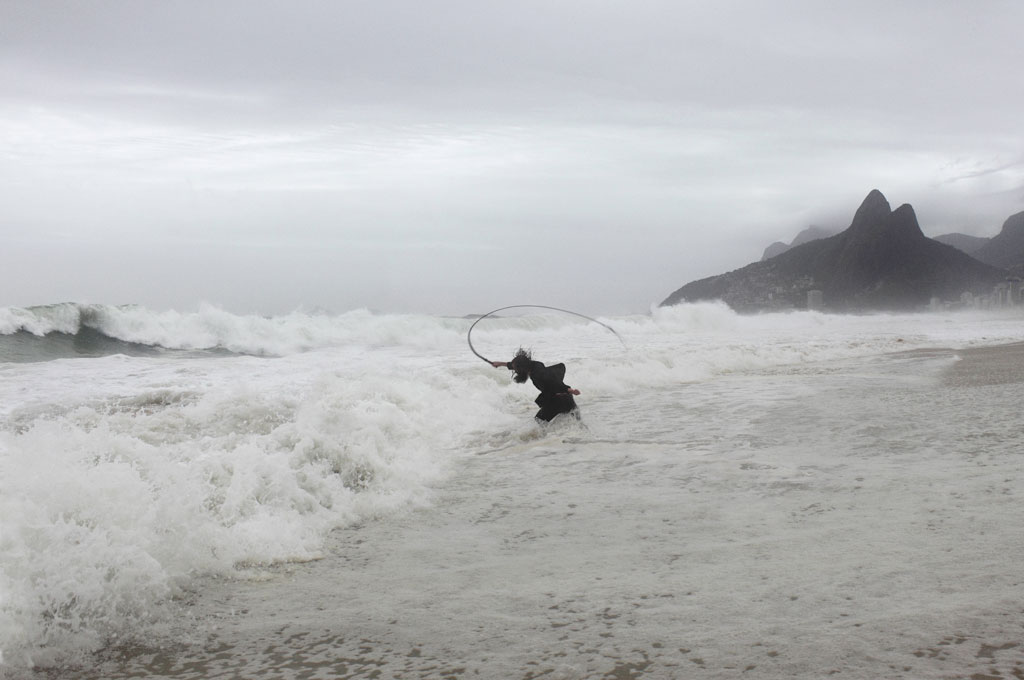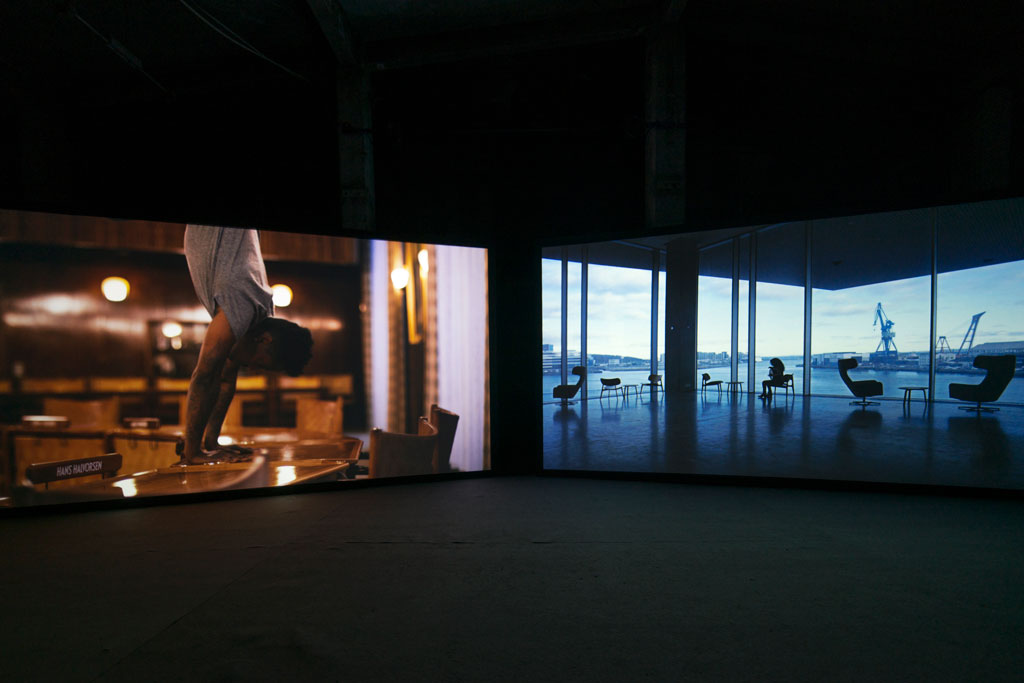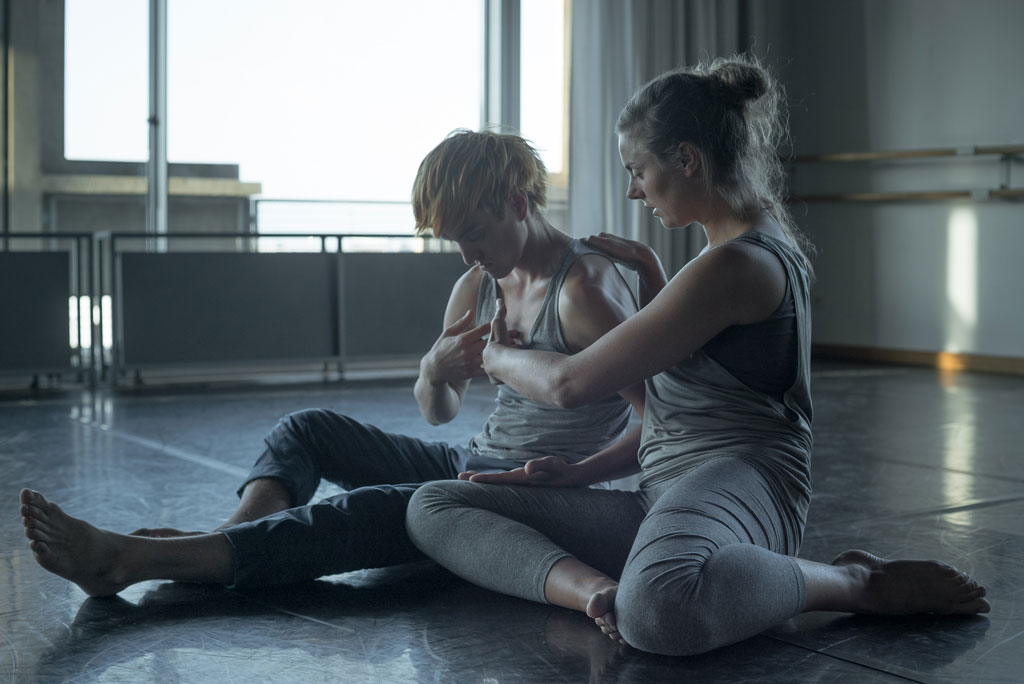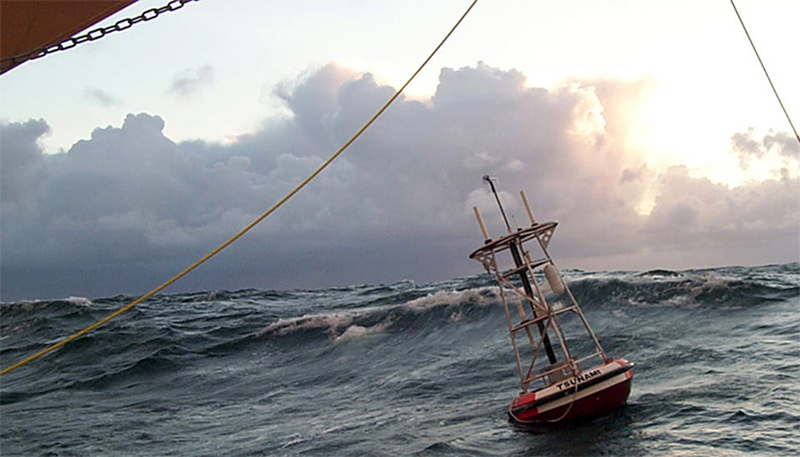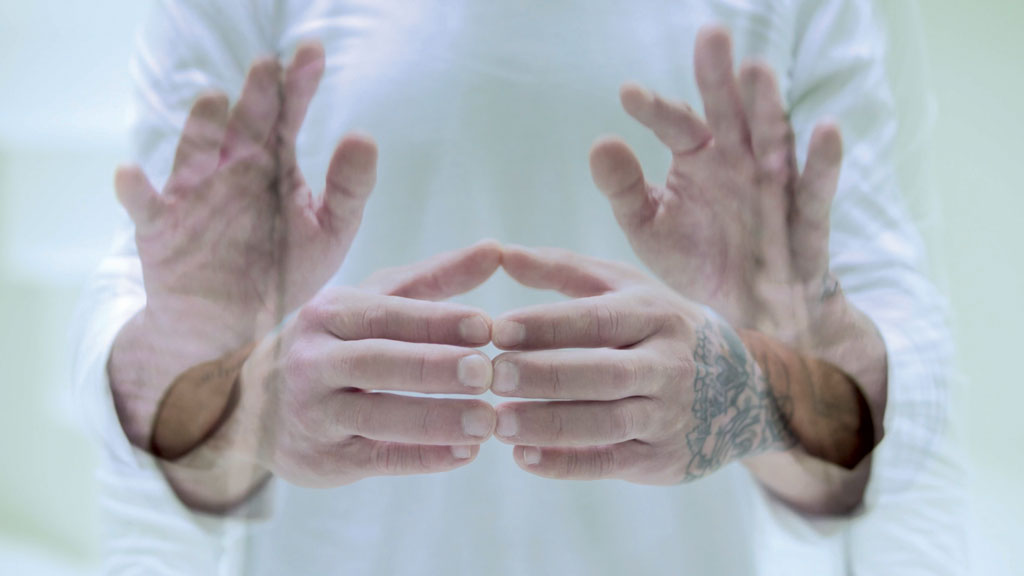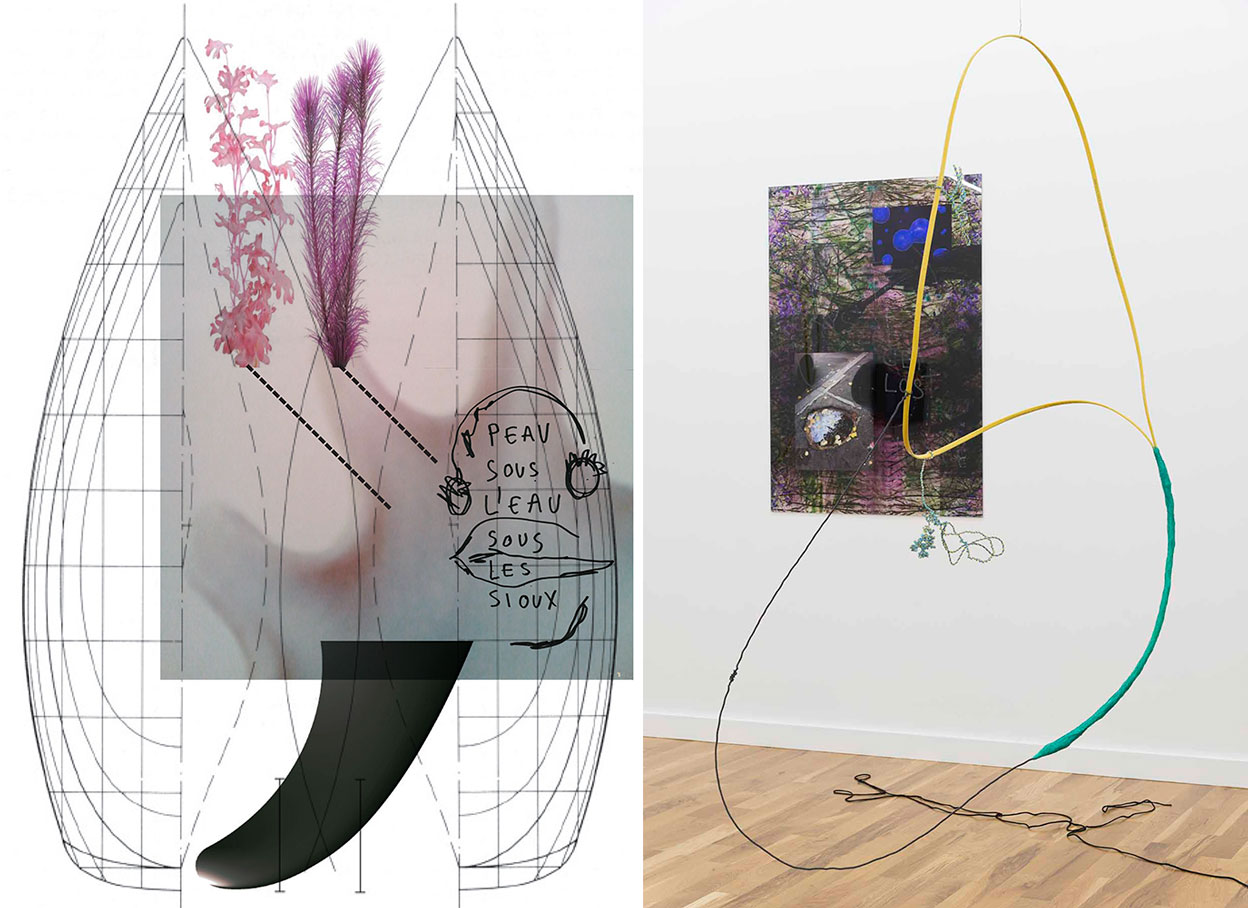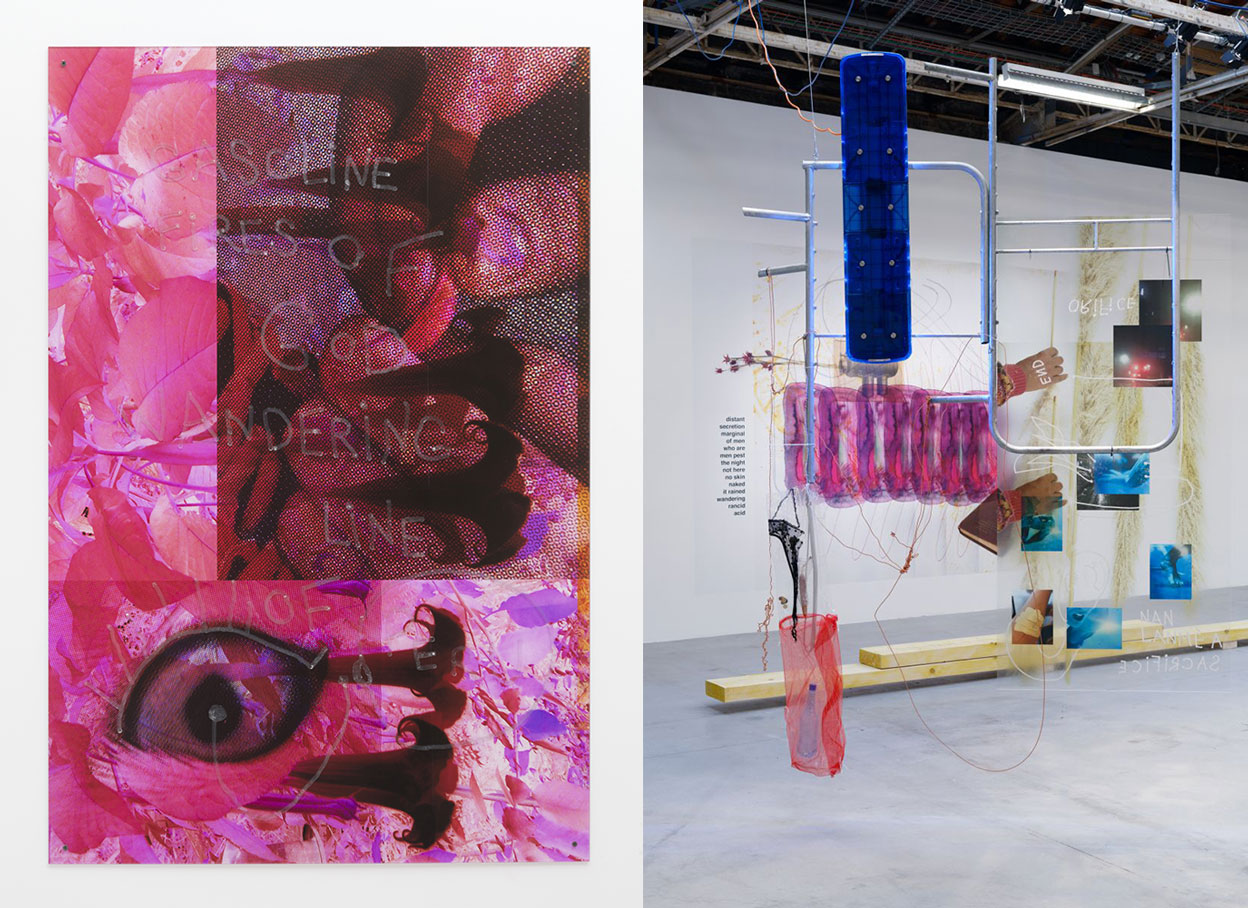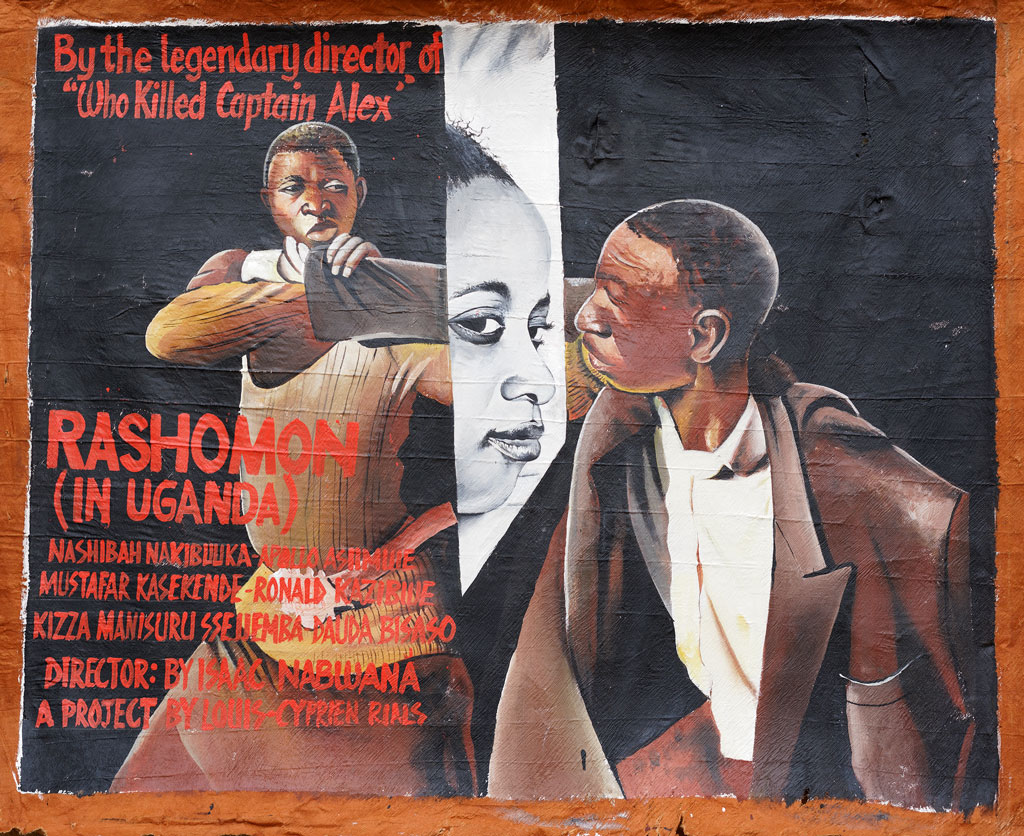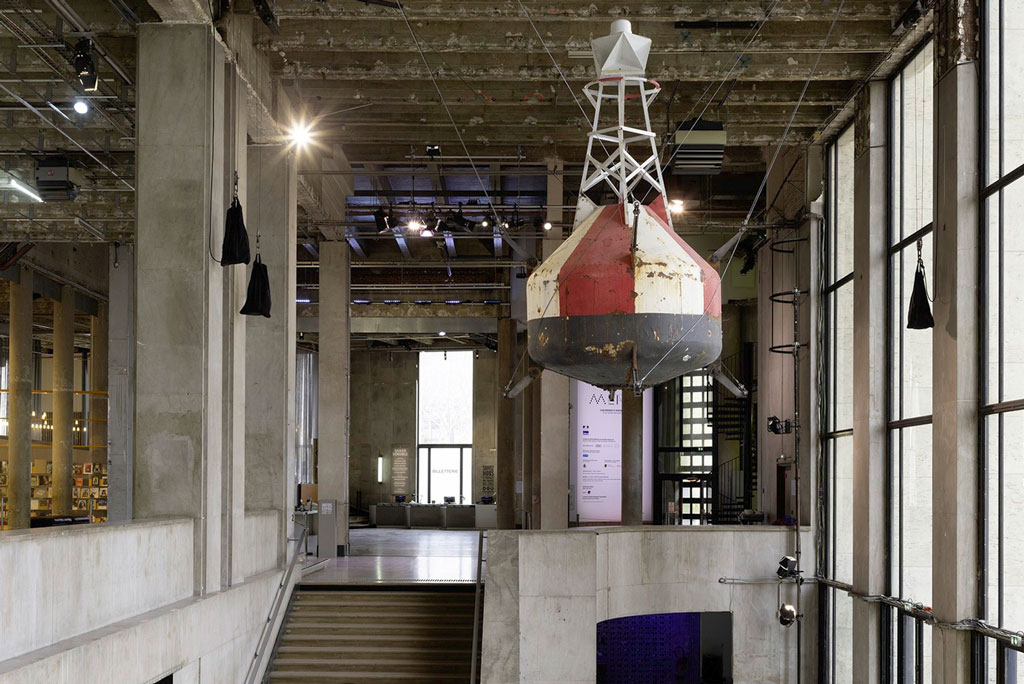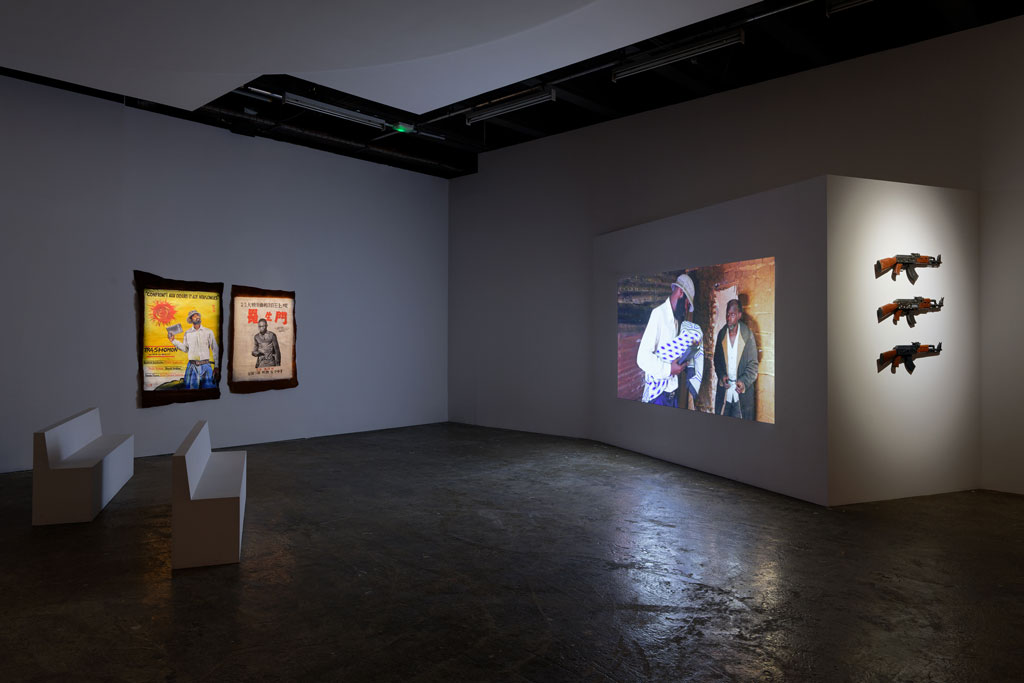ART-PRESENTATION: Sensitive
 The new season of Palais de Tokyo “Sensitive” opens with uncertain motions: those of the combined action of water and the wind. It is with just such unstable matter that the artists presented in “Sensitive”: Theaster Gates, Angelica Mesiti, Julien Creuzet, Louis-Cyprien Rials, Julius von Bismarck and Franck Scurti, all pay particular attention to movements: in social history, migrations, cultural heritages or else in the uprooting and the transposition of the signs and gestures of everyday life. Being sensitive means changing on contact with others, putting into relation the world’s imaginaries, while producing the unforeseen futures of our mingled destinies.
The new season of Palais de Tokyo “Sensitive” opens with uncertain motions: those of the combined action of water and the wind. It is with just such unstable matter that the artists presented in “Sensitive”: Theaster Gates, Angelica Mesiti, Julien Creuzet, Louis-Cyprien Rials, Julius von Bismarck and Franck Scurti, all pay particular attention to movements: in social history, migrations, cultural heritages or else in the uprooting and the transposition of the signs and gestures of everyday life. Being sensitive means changing on contact with others, putting into relation the world’s imaginaries, while producing the unforeseen futures of our mingled destinies.
By Efi Michalarou
Photo: Palais de Tokyo Archive
Associating visual arts to other fields of research and experimentation, such as physical and social sciences, Julius von Bismarck’s artistic practice can take on various forms – from installations to happenings, from sculpture to Land Art. It is defined by an in-depth and complex exploration of the phenomena of perception, or the representation and reconstruction of reality.Inspired by the figure of Tethys* Julius von Bismarck has conceived the project “Die Mimik der Tethys”, for which he has moved the oceans. That is at least the sensation produced by the presence of a buoy hung over the Palais de Tokyo’s Palier d’honneur, corroded by sea salt and covered by dry seaweed. In perpetual motion, the buoy reproduces the movements of its original setting, off the Atlantic coast. It is in this way that the visitors find themselves metaphorically under the ocean, and can directly perceive the sway of its waves, which can be either gentle, or wild. “Die Mimik der Tethys” works like a barometer of nature’s moods. As a random alternation of moments of calm and violence, this hypnotic installation plunges the visitors into the heart of an immersive relationship with nature. Far from being idealised, it takes over the Palais de Tokyo and is unveiled in an extremely unstable way, a tireless heaving that reminds us of the tender osmosis that links us, just like our vain desire to control our environment, with the risk of utterly destroying it. Julien Creuzet is a visual artist, video-maker, performer and poet. Via environments made up of composite series, he explores different cultural heritages by organising passageways between imaginaries of elsewhere, the social realities of here and now, and forgotten minority histories. By associating different temporalities and geographies, and preferring anachronisms and collusion over the simplicity of established tales, Julien Creuzet evokes registers of life and technology, history and myth, poetry and politics, to deploy disparate stories of hybrid creatures and swampy zones repossessed and contradicted by imperious civilisations’ desires for power and expansion. “dim lights of distant starsLEDs of warning lights indulge, lamp post embers that burn wings, mad sacrifice of the light butterfly, twilight phantom from before the of the world it’s the uncanny, I must have been gone too long that place far away, home is in my black-dreams it’s the uncanny, strangled words while drowning, I howled alone underwater, my fever (…)” is the title of Julien Creuzet’s exhibition that comes alive in the form of secular pop songs. A deep-sea landscape in a plastic pool. An unaccentuated rhyme illuminated by a bluish light, turning around on itself. A parrot glitching with a guitar on its foot. A melodic meandering along jagged shores. An array of ragmen’s stalls at the Croix-de-Chavaux market. A choreographic score derived from a Dogon ceremony. Sirius B rotating to the beats of Afro-house. Caroline zié-loli, Papa Djab, Napoleon Bonaparte and Joséphine’s severed head. A cockpit arena on Place de la République. Without forgetting a hairless dog with iron-coloured pixelated flesh, both a wily spirit and a conveyer between worlds. Angelica Mesiti works with video, installation and performance. For several years she has been developing research into non-verbal communication. Her ambitious video installations, both the fruition of long-term explorations and chance encounters, explore the potentialities of language which, beyond speech or writing, are contrary to any explicit expression, but still remain possible as a means of communication. Her solo show at the Palais de Tokyo, the first in a French institution, is entitled “When doing Is Saying”, a symbolic reversal of a performative utterance. Covering the 2012-2017 period, the exhibition highlights an iconic selection of Angelica Mesiti’s works, most of which having never been displayed in France. Her video installations create an immersive journey, which becomes increasingly experimental during the visit, requiring each visitor’s active participation. Whether it is a question of documenting musical performances from distant lands, but produced far away from their original contexts, staging a choir performing in sign language, or else adapting a Morse code message into music, choreography and sculpture, Angelica Mesiti creates new languages based on existing systems. The artist pays attention to questions of translation, through sound, or the body, of various cultural phenomena. In all of these works, she highlights the grace and inventiveness of everyday life, while underlining the social and political outreach of performance and music. Louis-Cyprien Rials discovered photography in Japan, where he was based for several years. He then moved to Paris, Brussels and Berlin, while also undertaking long stays in conflict zones and areas forbidden to the public. After the beginning of the 2000s, he has used photography and video in the attempt to grasp and narrate the violence underlying these territories. Louis-Cyprien Rials is presenting at the Palais de Tokyo a film and a series of objects made with Ramon Film Productions. This production company, set up by Isaac Nabwana I.G.G., brings together Ugandans from various origins in a studio not far from the Wakaliga road, in a ghetto in the suburbs of Kampala, the capital of Uganda. Together, they have been writing and producing successful, low-budget films for over ten years. Their feature-length movies are inspired from Chinese Kungfu films and convey the violence of American action movies. With Louis-Cyprien Rials, they produce “On the Wakaliga Roadside” an adaptation of “Rashomon” (1950) by Akira Kurosawa. The result is hybrid: it mingles filmic and cultural references, while leaving open the reality of Ugandan ghettos while, via a fiction, narrating how viewpoints and truths can be varied. Franck Scurti’s works, often derived from our everyday, domestic world, but also from the urban space, are part of what he calls “already socialised elements”. Their reinterpretation lies in re-compositions and shifts. The viewers dive into a familiar world, but which has been submitted to the artist’s explorations, thus requiring a recoding. With “More is Less”, Franck Scurti is extending his stroll through art history and the signs of daily life. After approaching the social and economic crisis in a series of sculptures the artist is here going back over Paul Gauguin’s “Yellow Christ”. The environment he has produced is conceived as a picture in three dimensions which the visitors are asked to walk around, is organised around a chair leg, rotated through 90°, with a Christ-like look. On the floor, his dismembered corpse produces a shock wave that reverberates across the entire space. The curved rear wall will be totally covered by a silk-printed pattern produced from a bag of baguettes found by the artist. This highly connotated pattern – a multiplication of bread – will then fade out progressively until its almost compete disappearance.
* In Greek mythology Tethys was a sea goddess, the daughter of Ouranos (the sky) and Gaia (the earth (), sister and wife of Oceanus (ocean) mother of 3,000 Potamoi (rivers) and 3.000 Oceanids nymphs (Potamoi were the personifications of the great rivers of the world and the Oceanids nymphs were the personification of springs).
Info: Curators: Anna Morettini & Daria de Beauvais (Julius von Bismarck), Yoann Gourmel (Julien Creuzet), Daria de Beauvais (Angelica Mesiti), Adélaïde Blanc (Louis-Cyprien Rials) and Claire Moulène (Franck Scurti), Palais de Tokyo, 13 Avenue du Président Wilson, Paris, Duration: 20/2-12/5/19, Days & Hours: Mon & Wed-Sun 12:00-24:00, www.palaisdetokyo.com
